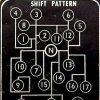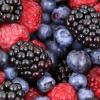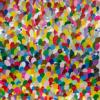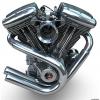Link: http://www.nutraingr...et-like-omega-3
Chromadex CEO: ‘We think Niagen has a much bigger market, like omega-3’
Chromadex’s Niagen-branded nicotinamide riboside ingredient is currently available in only one product – High Performance Nutrition’s (HPN) N® product to support neuroprotection in contact sports – but more products are on the way, Frank Jaksch, CEO of Chromadex, told NutraIngredients-USA…
“We see the dietary supplement market as the starting point,” said Jaksch, “and we think Niagen has a much bigger market, like omega-3.” Ultimately, the company sees a range of products from supplements to food and beverages, medical foods, and infant formula.
NR is found naturally in trace amounts in milk and other foods, and is a more potent, no-flush version of Niacin (vitamin B3). Published research has shown that NR is a potent precursor to NAD+ in the mitochondria of animals. NAD+ is an important cellular co-factor for improvement of mitochondrial performance and energy metabolism…
Numerous academic institutions are researching the potential health benefits of the ingredient, including Scripps, the Mayo Clinic, ULB Brussels, Queen’s University Belfast, Cornell, Harvard, MIT, and Iowa, and Jaksch said the company is in discussion with about 6 others. The focus of the research is primarily using NR for nutrition for different therapeutic endpoints.
“We’re in a great position,” said Jaksch, “because we are the only company with an NAD precursor.”
“And with all the research going on, we have a steady flow of publications from high profile people,” he added.
The science to date has remained non-clinical, but Jaksch said the first clinical trial with the ingredient has just started..

David Sinclair strikes again
#271
Posted 26 March 2014 - 09:38 PM
#272
Posted 27 March 2014 - 12:32 PM
#273
Posted 27 March 2014 - 03:02 PM
Nicotinamide and the skin
Australasian Journal of Dermatology, 03/27/2014 Review Article
Chen AC, et al. – Nicotinamide, an amide form of vitamin B3, boosts cellular energy and regulates poly–ADP–ribose–polymerase 1, an enzyme with important roles in DNA repair and the expression of inflammatory cytokines. Nicotinamide shows promise for the treatment of a wide range of dermatological conditions, including autoimmune blistering disorders, acne, rosacea, ageing skin and atopic dermatitis. In particular, recent studies have also shown it to be a potential agent for reducing actinic keratoses and preventing skin cancers.
#274
Posted 27 March 2014 - 10:48 PM
The following is from an Australian news report. The Australian scientist David Sinclair is of course the same as our Harvard buddy. During the 10-15 years of product development,clinical trials, etc., if we want to upgrade our personal NAD, how about plain old B-3, Niacin? cost per day, less than 35 cents, not $35,000.
#275
Posted 28 March 2014 - 01:28 AM
What follows is from Vince Giuliano's blog. I'm not clear if this is a quote from David Sinclair (or not), tacitly confirming that Niacin is an inexpensive, effective NAD precursor. Scroll to the bottom of the page: http://www.anti-agin...od-or-bad-idea/
The following is from an Australian news report. The Australian scientist David Sinclair is of course the same as our Harvard buddy. During the 10-15 years of product development,clinical trials, etc., if we want to upgrade our personal NAD, how about plain old B-3, Niacin? cost per day, less than 35 cents, not $35,000.
Personally , I can't take the flushing that I would endure from 250-375 mg of Niacin
I also think the literature shows that nicotinamide riboside is a more efficient enducer.
Maybe plain nicotinamide would be closer
#276
Posted 28 March 2014 - 04:08 AM
I also think the literature shows that nicotinamide riboside is a more efficient enducer.
Maybe plain nicotinamide would be closer
"Nevertheless, the effects of NR on metabolism "are nothing short of astonishing."
"Our published scientific work has verified that NR is perhaps the most potent NAD enhancing agent ever identified,"
http://weill.cornell...h-benefits.html
I think the two quotes from the article I posted yesterday by the team that have done a lot of the groundwork on NR say it all in that respect.....
#277
Posted 28 March 2014 - 09:55 PM
Are there any interactions between the two? If yes, how.do you space out taking each?
Thanks!
#278
Posted 28 March 2014 - 09:56 PM
ChromaDex is in the final stages of completing the design of its 1st human clinical study. This study is very important. It shows that in animals, the use of NR offers the health benefits of a low calorie diet and exercise; without doing either one
#279
Posted 28 March 2014 - 10:41 PM
Has anyone taken C60-EVOO and Niagen?
Are there any interactions between the two? If yes, how.do you space out taking each?
Thanks!
I take both. They are completely different and AFAIK don't interact. I dose Niagen daily and C60oo once or twice a month.
#280
Posted 28 March 2014 - 11:51 PM
http://www.slideshar...entation-120313 Scroll down to 5 to read the quote in context.
ChromaDex is in the final stages of completing the design of its 1st human clinical study. This study is very important. It shows that in animals, the use of NR offers the health benefits of a low calorie diet and exercise; without doing either one
?
#281
Posted 29 March 2014 - 01:24 AM
What follows is from Vince Giuliano's blog. I'm not clear if this is a quote from David Sinclair (or not), tacitly confirming that Niacin is an inexpensive, effective NAD precursor. Scroll to the bottom of the page: http://www.anti-agin...od-or-bad-idea/
The following is from an Australian news report. The Australian scientist David Sinclair is of course the same as our Harvard buddy. During the 10-15 years of product development,clinical trials, etc., if we want to upgrade our personal NAD, how about plain old B-3, Niacin? cost per day, less than 35 cents, not $35,000.
Personally , I can't take the flushing that I would endure from 250-375 mg of Niacin
I also think the literature shows that nicotinamide riboside is a more efficient enducer.
Maybe plain nicotinamide would be closer
Absolutely not. The rash will go away in no time. Nicotinamide is toxic to the liver at fairly low doses. It is also the NAD+ breakdown product that the body uses to sense NAD+ levels. As the Nicotinamide to NAD+ path gets saturated fast, supplementing Niacinamide will quickly worsen metabolism and NAD+ levels. In fact, there is a compelling study on Nicotinamide being the culprit for the diabetes and syndrome X epidemic after it got added to flour. Avoid nicotinamide, save for really low doses in multivitamins.
#282
Posted 29 March 2014 - 03:25 AM
http://www.ncbi.nlm....WJG-16-2378.pdf
#283
Posted 29 March 2014 - 03:30 AM
Nicotinamide is... the NAD+ breakdown product that the body uses to sense NAD+ levels. As the Nicotinamide to NAD+ path gets saturated fast, supplementing Niacinamide will quickly worsen metabolism and NAD+ levels. In fact, there is a compelling study on Nicotinamide being the culprit for the diabetes and syndrome X epidemic after it got added to flour. Avoid nicotinamide, save for really low doses in multivitamins...
What do you consider to be a low dose of nicotinamide?
#284
Posted 29 March 2014 - 03:35 AM
Nicotinamide is... the NAD+ breakdown product that the body uses to sense NAD+ levels. As the Nicotinamide to NAD+ path gets saturated fast, supplementing Niacinamide will quickly worsen metabolism and NAD+ levels. In fact, there is a compelling study on Nicotinamide being the culprit for the diabetes and syndrome X epidemic after it got added to flour. Avoid nicotinamide, save for really low doses in multivitamins...
What do you consider to be a low dose of nicotinamide?
20mg or less. Per day. Less is more. Essentially it works so that nicotinamide is the salvageable breakdown product that can be recycled back to NAD+. But that pathway gets saturated really easily. Excess nicotinamide floating around will be sensed by the body as there being too much NAD+ around. Which is not at all the case, if you just artificially boosted its breakdown product nicotinamide. This puts the brakes on NAD+ synthesis and all goes down the hill. This is also why nicotinamide is really really toxic to the liver, which is particularly dependent on NAD+. And similarly this is exactly why nicotinamide puts the brakes on SIRT1 expression, which depends on NAD+. So, if you want to mess up your metabolism, increase your risk for diabetes2/syndrome X and age FASTER..then by all means whine about niacin rash and opt for nicotinamide instead
Edited by Ukko, 29 March 2014 - 03:45 AM.
#285
Posted 29 March 2014 - 03:42 AM
Nicotinamide is... the NAD+ breakdown product that the body uses to sense NAD+ levels. As the Nicotinamide to NAD+ path gets saturated fast, supplementing Niacinamide will quickly worsen metabolism and NAD+ levels. In fact, there is a compelling study on Nicotinamide being the culprit for the diabetes and syndrome X epidemic after it got added to flour. Avoid nicotinamide, save for really low doses in multivitamins...
What do you consider to be a low dose of nicotinamide?
20mg or less. Per day. Less is more.
How might niacin differ from nicotinamide (with respect to worsening NAD+ levels)?
Would you consider 50 mg/day niacin in a multivitamin to be "safe"
#286
Posted 29 March 2014 - 03:49 AM
Nicotinamide is... the NAD+ breakdown product that the body uses to sense NAD+ levels. As the Nicotinamide to NAD+ path gets saturated fast, supplementing Niacinamide will quickly worsen metabolism and NAD+ levels. In fact, there is a compelling study on Nicotinamide being the culprit for the diabetes and syndrome X epidemic after it got added to flour. Avoid nicotinamide, save for really low doses in multivitamins...
What do you consider to be a low dose of nicotinamide?
20mg or less. Per day. Less is more.
How might niacin differ from nicotinamide (with respect to worsening NAD+ levels)?
Would you consider 50 mg/day niacin in a multivitamin to be "safe"
Easy. Three are four paths known by science to NAD+. The very inefficient path from l-tryptophan. The more efficient path from niacin/nicotinic acid to NAD+. The very easily saturated path from the NAD+ breakdown product nicotinamide back to NAD+. And the recently found fourth route from nicotinamide riboside to NAD+. Based on decades of science and wide spread use of niacin/nicotinic acid, I do consider everything up to 2000-3000mg daily safe depending on adult body weight. Way different from the toxic nicotinamide.
Edited by Ukko, 29 March 2014 - 03:49 AM.
#287
Posted 29 March 2014 - 08:32 AM
How does it influence NAD+ levels ?
#288
Posted 29 March 2014 - 09:06 AM
What about Inositolhexanicotinat ?
How does it influence NAD+ levels ?
Inositol hexanicotinate is in fact a "slow release" form of plain nicotinic acid. It is absorbed mostly intact and subsequently hydrolized to nicotonic acid and minor amounts of inositol (aprox. 9:1). This process takes some time, so the blood levels rise much slower than after taking straight nicotinic acid. Hence, you can take considerably higher doses without flushing but you also won't experience the same beneficial cholesterol lowering effects, because they seem to depend on high transient plasma levels of nicotinic acid. Moreover, slow-release preperations of nicotinic acid have been associated with increaed liver toxicity.
See this recent evaluation by the EFSA.
Edited by timar, 29 March 2014 - 09:12 AM.
#289
Posted 29 March 2014 - 02:19 PM
What about Inositolhexanicotinat ?
How does it influence NAD+ levels ?
Inositol hexanicotinate is in fact a "slow release" form of plain nicotinic acid. It is absorbed mostly intact and subsequently hydrolized to nicotonic acid and minor amounts of inositol (aprox. 9:1). This process takes some time, so the blood levels rise much slower than after taking straight nicotinic acid. Hence, you can take considerably higher doses without flushing but you also won't experience the same beneficial cholesterol lowering effects, because they seem to depend on high transient plasma levels of nicotinic acid. Moreover, slow-release preperations of nicotinic acid have been associated with increaed liver toxicity.
See this recent evaluation by the EFSA.
Inositol hexanicotinate is a remarkably little studied substance in light of its fairly common use. Logically should be better than nicotinamide, but there are confusing reports on what it does to the liver, if anything. Similarly, it seems suspect that it lacks a big positive effect on cholesterol. This essentially suggests that it would not boost metabolism which in turn should happen with higher NAD+ levels. I personally am sticking with NR and plain niacin, until I understand the hexanicotinate form well. And minimizing nicotinamide intake.
#290
Posted 29 March 2014 - 02:30 PM
See this. Nicotinamide is toxic to the liver and reduces glucose tolerance and thereby messes up everything at quite low doses:
http://www.ncbi.nlm....WJG-16-2378.pdf
http://www.ncbi.nlm....pubmed/24559077
2014 Feb 21
"Results Data from animal and human interventional studies and epidemiological research suggests that nicotinamide may be beneficial in preserving and enhancing neurocognitive function. Discussion Nicotinamide is non-toxic, inexpensive and widely available, and interventional studies in humans, using supplemental doses of nicotinamide, are now warranted."
#291
Posted 30 March 2014 - 01:26 AM
http://www.jbc.org/c.../47/45099.short
http://www.ncbi.nlm....pubmed/15780941
http://anti-agingfir...nd-resveratrol/
And, yes, supplementing nicotinamide will feed the negative feedback loop to lower NAD+ synthesis. Again, I gain nothing from bringing this up. You will find ample source from different threads at Longecity proving that nicotinamide is the breakdown product that the body uses to put the brakes on NAD+ synthesis from niacin. Some other nasty findings here;
http://www.scienceda...91222105449.htm
http://www.ncbi.nlm..../pubmed/8866571
= 24% decrease in insulin sensitivity = avoid it like yeast. Pro-aging shit.
Quoting one of the above links:
"Why not nicotinamide?
As a side to this discussion, I have often been asked why I do not include nicotinamide, one of the two principal forms of the B-complex vitamin niacin, in my anti-aging supplement regimen. In fact, nicotinamide was recommended by my physician for control of cholesterol levels but I don’t take it and effectively control my cholesterol in other ways. The answer is simple: nicotinamide is a powerful inhibitor of SIRT1 and its anti-aging activities, not only capable of negating any benefits from taking resveratrol but also stopping natural exp<b></b>ression of SIRT1 in the body. As stated above “The SIRT1 activator resveratrol reduces, whereas SIRT1 inhibitor nicotinamide enhances mTOR activity in a SIRT1 dependent manner(ref).” That is, nicotinamide is a pro-aging substance so I avoid it."
Edited by Ukko, 30 March 2014 - 01:41 AM.
#292
Posted 30 March 2014 - 08:46 AM
As long as this question hasn't been answered conclusively, there's always the possibility that nicotinamide riboside turns out to be nothing but extremely expensive nicotinamide. Ouch!
Edited by timar, 30 March 2014 - 08:47 AM.
#293
Posted 30 March 2014 - 11:17 AM
#294
Posted 30 March 2014 - 11:27 AM
I can't find the reference but I did read somewhere that there is 12mg of N® in an 8oz glass of milk. I have drunk 3 liters of milk in a day on many occasions so that is at least 12 8oz glasses which is 144mg in a day.
That sounds like too much. Are you sure it wasn't micrograms?
#295
Posted 30 March 2014 - 12:56 PM
Sir, I have no doubt that you can find 100.000 more references saying that nicotinamide is safe. No doubt they say that. Even then, I doubt that those studies look at what it actually does to SIRT-1 or NAD+ levels. Non-lethal, yes, healthy, no. I don't say stuff like that just for the sheer joy of it. It is also true. Nicotinamide is one of the most efficient sirtuin inhibitors. Digest at your own risk over the long term.
http://www.jbc.org/c.../47/45099.short
http://www.ncbi.nlm....pubmed/15780941
http://anti-agingfir...nd-resveratrol/
And, yes, supplementing nicotinamide will feed the negative feedback loop to lower NAD+ synthesis. Again, I gain nothing from bringing this up. You will find ample source from different threads at Longecity proving that nicotinamide is the breakdown product that the body uses to put the brakes on NAD+ synthesis from niacin. Some other nasty findings here;
http://www.scienceda...91222105449.htm
http://www.ncbi.nlm..../pubmed/8866571
= 24% decrease in insulin sensitivity = avoid it like yeast. Pro-aging shit.
Quoting one of the above links:
"Why not nicotinamide?
As a side to this discussion, I have often been asked why I do not include nicotinamide, one of the two principal forms of the B-complex vitamin niacin, in my anti-aging supplement regimen. In fact, nicotinamide was recommended by my physician for control of cholesterol levels but I don't take it and effectively control my cholesterol in other ways. The answer is simple: nicotinamide is a powerful inhibitor of SIRT1 and its anti-aging activities, not only capable of negating any benefits from taking resveratrol but also stopping natural expression of SIRT1 in the body. As stated above "The SIRT1 activator resveratrol reduces, whereas SIRT1 inhibitor nicotinamide enhances mTOR activity in a SIRT1 dependent manner(ref)." That is, nicotinamide is a pro-aging substance so I avoid it."
Thanks Ukko, I'll read those later
Well, can we absolutely be sure that orally taken nicotinamide riboside isn't partially hydrolized in the intestines to plain nicotinamide? Remember: the human digestive tract is quite different from that of a rat.
As long as this question hasn't been answered conclusively, there's always the possibility that nicotinamide riboside turns out to be nothing but extremely expensive nicotinamide. Ouch!
That is definatly a possibility, lets hope not...
I can't find the reference but I did read somewhere that there is 12mg of N® in an 8oz glass of milk. I have drunk 3 liters of milk in a day on many occasions so that is at least 12 8oz glasses which is 144mg in a day. Can't be that bad for you I guess...
PWAIN, I just happen to have had a look round yesterday trying to find how much NR is actually in milk, and the best I could come up with is that it is in minute levels, and extremely difficult to measure in Milk, but it is there.
So I'm sure Niner's micro-grams is nearer the mark.
Using that information the 250mg per day Niagen (Nr) dosing doesn't sound too bad. But I am sure it would be better at double that or even 1 Gram per day....Just my guess.
#296
Posted 30 March 2014 - 01:15 PM
"We recieve calls and emails daily stating much the same. Of course quantity is important, There is about 12mg of nicotinamide riboside in an 8pz glass of milk, our daily serving is 20x more than this."
http://www.amazon.co...#wasThisHelpful
Edited by PWAIN, 30 March 2014 - 01:16 PM.
#297
Posted 30 March 2014 - 02:11 PM
I would be very sceptical about that claim, for a couple of reasons...Feedback on Amazon is not the best place to gain knowledge and I am always sceptical of anyone promoting a product.......This is not to say this guy is wrong, but I cant understand why they have not published this fact on the promotional blurb that goes with the NrOk, I finally found where I saw this. It was written by the guy who designed Niagen and I don't see any reason for him to exaggerate the amount found in milk, quite the opposite.
"We recieve calls and emails daily stating much the same. Of course quantity is important, There is about 12mg of nicotinamide riboside in an 8pz glass of milk, our daily serving is 20x more than this."
http://www.amazon.co...#wasThisHelpful
I found this yesterday...
“But at the moment, we can’t even measure its concentration in Milk" he cautions "so it's impossible to know how much you would have to drink to observe it's affects" (second paragraph up from bottom of page)
http://phys.org/news...cule-video.html
Edited by midas, 30 March 2014 - 02:13 PM.
#298
Posted 30 March 2014 - 03:45 PM
I found this yesterday...
“But at the moment, we can’t even measure its concentration in Milk" he cautions "so it's impossible to know how much you would have to drink to observe it's affects" (second paragraph up from bottom of page)
http://phys.org/news...cule-video.html
In that same article they quote Auwerx's team as saying, “despite all our efforts, we were not able to detect side effects,” says Cantó. Even in quantities ten times over the “effective” dose, no adverse reactions were observed. “It really appears that cells use what they need when they need it, and the rest is set aside without being transformed into any kind of deleterious form,”
Good news for anyone considering saturation doses. <grin> I'll let you take that hit first to see how it goes.
Edited by Marty D, 30 March 2014 - 03:47 PM.
#299
Posted 30 March 2014 - 10:59 PM
I would be very sceptical about that claim, for a couple of reasons...Feedback on Amazon is not the best place to gain knowledge and I am always sceptical of anyone promoting a product.......This is not to say this guy is wrong, but I cant understand why they have not published this fact on the promotional blurb that goes with the Nr
I agree that feedback on Amazon is not the best place but the point here is that this is the guy who developed Niagen and has spent 18 months looking into this chemical. If anyone outside of the research community would know this, he certainly should. The context of his comment indicates that he was trying to show just how little is present in milk so better to buy his product. If the comment was from someone in the milk industry, then I would be way more suspicious
#300
Posted 30 March 2014 - 11:29 PM
I would be very sceptical about that claim, for a couple of reasons...Feedback on Amazon is not the best place to gain knowledge and I am always sceptical of anyone promoting a product.......This is not to say this guy is wrong, but I cant understand why they have not published this fact on the promotional blurb that goes with the Nr
I agree that feedback on Amazon is not the best place but the point here is that this is the guy who developed Niagen and has spent 18 months looking into this chemical. If anyone outside of the research community would know this, he certainly should. The context of his comment indicates that he was trying to show just how little is present in milk so better to buy his product. If the comment was from someone in the milk industry, then I would be way more suspicious


.
PWAIN, What you are saying there sounds right, I just cant see how a scientist that is working with NR can say " at the moment, we can’t even measure its concentration in Milk" and then they find their is as much as 12mg in 1/2 pint.
Seems to me that it wouldn't be difficult for a scientist working with the stuff to find 12mg in there?
It just seems a little odd to me.
Also tagged with one or more of these keywords: aging, aging theories, david sinclair, mitochondria, nad, sinclair, niagen, nmn, nicotinamide riboside
Science & Health →
AgingResearch →
Sunlight, Calorie Bingeing, and Unaging FaceStarted by Cloomis , 14 Mar 2025 |
|

|
||
Science & Health →
AgingResearch →
The Sunlight FactorStarted by Cloomis , 04 Feb 2025 |
|

|
||
Science & Health →
Medicine & Diseases →
Best health investments - 3KStarted by Bania , 17 Jan 2025 |
|

|
||
Science & Health →
Supplements →
Boron (Boric Acid): Anti AGE, Gut Ribose production, etc?Started by Logic , 31 Dec 2024 |
|

|
||
Science & Health →
AgingResearch →
Biomarkers & Genes →
New Study: N6-methyladenine (6mA) accumulaation in mtDNA correlated to lifepanStarted by revenant , 27 Aug 2024 |
|

|
2 user(s) are reading this topic
0 members, 2 guests, 0 anonymous users

















































